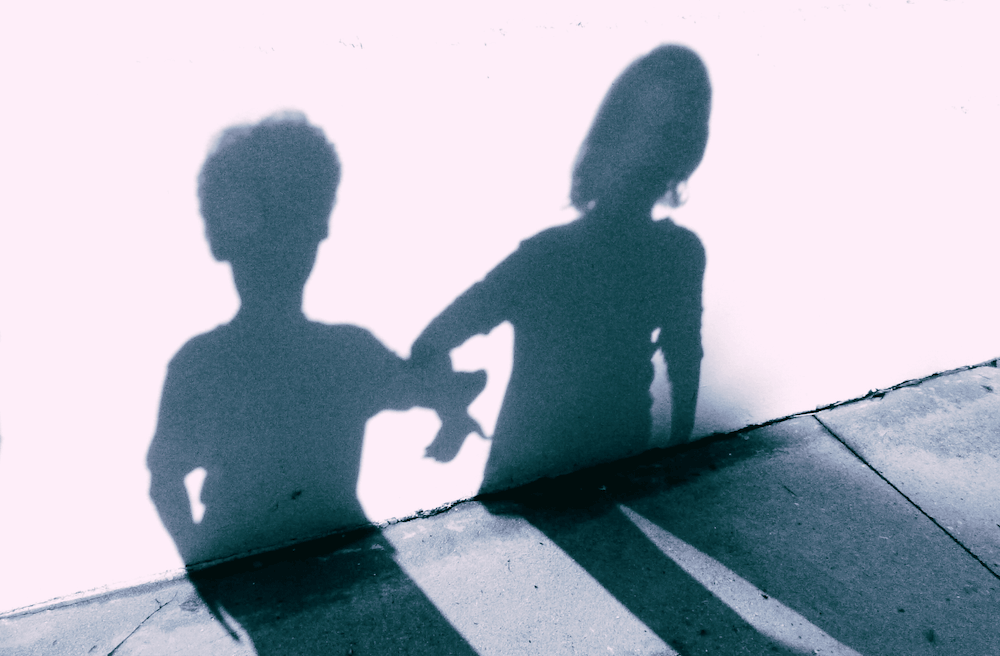Yoga of Mental Health Workshops → More Info
Understanding Your Shadow Self: The Key to True Self-Awareness

In Jungian psychology, the shadow represents the aspects of the psyche, both positive and negative, creative and destructive, that are hidden or denied. These can include fears, desires, and instincts contradicting our self-image. Or, it can be the denial of our strength, power, or ability to love ourselves, undermining our self-esteem. While these elements remain unconscious, they continue to influence our behavior and thoughts in subtle but powerful ways. The situation is like the ostrich with its head buried in the sand. The unresolved shadow issues continue to fester in the psyche, causing great suffering and even mental illness.
Managing your shadow requires that you cultivate self-awareness. Your level of self-awareness plays a crucial role in how you experience and interact with your shadow. When you lack self-awareness, your shadow often operates unchecked, influencing your behavior in ways you don't understand. You might react strongly to certain situations or people without knowing why or repeat patterns that don't serve you well.
These moments when your shadow emerges can leave you feeling like a stranger to yourself, confused by your emotions and actions. By learning to understand how the shadow operates, you can begin to harmonize the conflicting aspects of your personality, creating more peace and wholeness.
The Shadow At Work
"Our shadow is the person we'd rather not be." Robert A. Johnson
It happens in an instant. A careless word, an unexpected setback, or a moment of stress—and suddenly, your carefully crafted personality shatters as your shadow erupts from the depths of your psyche.
You say or do something you never intended, becoming a stranger to yourself and everyone around you. The aftermath leaves you reeling and apologizing, but it can't erase what everyone has just witnessed: a darker version of you.
This eruption is your shadow self—the unwanted part of you that starkly contrasts your ideal self-image, your ego. It's the aspect of your personality you keep hidden because you find it unattractive, unacceptable, or even abhorrent. It's the version of yourself you dread showing to family, friends, and peers.
Acknowledging the shadow can be challenging for those on a spiritual path. It often seems at odds with the qualities you seek: connection, harmony, upliftment, and divinity—all manifestations of light. However, understanding your shadow is integral to finding these very qualities. Paradoxically, the path to greater light involves delving into your darkness. As Carl Jung, who introduced the concept of the shadow, wisely noted, "To confront a person with his shadow is to show him his own light." By understanding your shadow, you foster a more authentic spirituality.
Yet many spiritual people try to ignore their shadows. This is particularly true for people within spiritual traditions that demonize the dark aspects of the psyche. Psycho-spiritual traditions that work with the shadow, such as yoga-tantra, are much more balanced and realistic.
The shadow remains an undeniable part of you, lurking beneath the surface, waiting for the right moment to break free.
If you possess a modicum of self-awareness, you might ask, "Where does this other me come from? How can I understand this part of myself?" Without self-awareness and introspection, you become caught in a pattern of inner conflict, constantly grappling with the contrast between the person you've strived to become and this unpredictable force within.
Of course, your shadow doesn't always express itself in extreme ways. It can manifest in subtle forms—through thoughts, moods, dreams, and fantasies that make you feel uncomfortable or conflicted.
Recognizing these more subtle expressions of your shadow is as important as achieving self-awareness and self-knowledge. Otherwise, they will unconsciously erupt and swamp your self-awareness. The path toward understanding your shadow is a path of learning. It lies in confronting and integrating this hidden aspect of yourself.
What is the Shadow?
According to Carl Jung's psychology, we have an ego/persona, a shadow, and a self. The simplest way to understand them is:
Your ego is your conscious identity. It’s paired with your personae, the image you show to survive and thrive daily. It's the version of yourself you've cultivated over time to meet societal expectations and worldly aspirations.
Your shadow is the hidden part of your psyche. It encompasses the traits, impulses, and desires you've repressed or denied. These might be negative qualities you'd rather not acknowledge, but they can also include positive qualities you feel unworthy of expressing.
Your Self (capital S) is your true inner nature—the core of who you are and will always be. It's a broader concept that encompasses both your ego and your shadow.
Understanding these parts of you is crucial because they often don't work together smoothly. Many personal struggles—identity crises, relationship issues, mental health challenges, and spiritual confusion—manifest from the conflict between the ego and the shadow. By recognizing and harmonizing these aspects of yourself, you can work towards a more balanced and fulfilling life.
What Lies Within Your Shadow?
The shadow comprises various elements you've pushed away from your conscious awareness. At its core, the shadow contains traits and behaviors you might easily recognize in others but struggle to see in yourself. These may include qualities like egotism, laziness, aggression, and even positive attributes you've disowned, such as self-confidence and self-expression.
The feelings you've deemed unacceptable, whether due to social or cultural disapproval or personal discomfort, play a significant role in your shadow's makeup. This emotional repository isn't limited to negative feelings like resentment or jealousy; it can also contain positive emotions such as exuberance and passion.
The shadow is also home to unprocessed experiences, particularly shameful experiences and traumas. These experiences were too challenging to integrate into your self-concept when they occurred, so they take up residence in the darkest corners of your psyche.
Archetypes and the Shadow: Universal Patterns in the Unconscious Mind
Archetypes are universal patterns or themes Jung called the "collective unconscious," a pool of instincts and experiences common to all humans, regardless of culture. These ancient blueprints of human behavior and experience emerge at various times to shape your thoughts, feelings, and actions on a deep psychic level.
For instance, the Mother or Father archetype surfaces when you become a parent or take on a nurturing role. As a child, you might tap into the mother archetype when playing with dolls, mimicking nurturing behaviors. The Wise Sage or the Fool archetypes might vie for dominance when you face important decisions, such as investing in the stock market. In these moments, you might make choices that seem incredibly wise or startlingly foolish, depending on which archetype holds sway.
Archetypes that don't fit your self-image or social norms get pushed into your shadow. Take the Warrior archetype in young teen males, for example. If the warrior's energy is repressed instead of expressed in healthy ways, it can cause problems.
Understanding these archetypal influences can help you navigate life's challenges with awareness and intentionality. The goal is to recognize these archetypal forces and find positive ways to channel them rather than pushing them into your shadow, where they become distorted or troublesome.
How Your Shadow Is Created

"Everything that is casts a shadow." ― Neil Gaiman, American Gods
Your shadow forms from being socialized by your parents, siblings, teachers, friends, society, environment, and culture. As you navigate the expectations and reactions of those around you, you learn which aspects of yourself are accepted and safe to express and which are not.
The traits and behaviors that receive praise and acceptance become your default characteristics. These form the foundation of your ego—your conscious self-image—and your persona—the face you present to the world. You associate these traits with safety, acceptance, and belonging, labeling them "good" or "right." Naturally, your daily habits and behaviors stem from these approved parts of yourself, reinforcing your sense of identity and place in society.
Unacceptable traits and behaviors within your family, social, or cultural circle are sent into the unconscious, becoming shadow traits. They remain invisible yet active until they exert pressure on your conscious mind and ego structure.
For example, in past generations, males were rewarded for holding back tears when they wanted to cry because showing emotion was seen as a weakness in men. Courage and displays of strength were praised, while vulnerability was denied. For some men, this led to disastrous consequences, such as depression and even suicide.
Females were rewarded for attending to the needs of others before their own and for looking pretty. Obsession with youthfulness and beauty becomes a social norm for women. Those who don’t conform are shunned from certain groups in society.
In my early life, self-expression was repressed. Living with my grandmother, who slept late, I was instructed to be "pin-drop quiet" in the mornings. This instruction extended far beyond reasonable bounds—I found myself tiptoeing even at the opposite end of the house or outside, where she couldn't hear me. And generally, I was not invited to express myself. This experience pushed my voice and my very aliveness into the shadows.
It wasn't until my first boyfriend brought this behavior to my attention that I became aware of its impact. This realization enabled me to confront and update this shadow aspect. I began a conscious journey of reclaiming my presence, starting with simple acts like walking on my heels (not my toes) and developing a self-determined stride. These practical changes were very liberating.
I found my voice as I integrated this previously repressed part of myself. I began to speak up more, feeling a growing connection to my inner power. This example illustrates how bringing shadow aspects into consciousness can lead to profound changes, allowing us to reclaim parts of ourselves lost through childhood repressions.
Identity and Shadow Creation: A Natural Process
Shadow formation is a natural and necessary process; without it, you would become disinhibited, chaotic, and unable to function. Ideally, shadow formation helps you integrate into society in healthy ways so that you adapt to the various roles (archetypes) you'll experience throughout your life: family member, community member, friend, citizen, etc.
However, if you grew up in an antisocial or violent environment and incorporated these behaviors into your ego structure, your socially positive traits might be repressed into the shadow. For example, many antisocial or criminal parents inadvertently teach their children to adopt similar lifestyles, causing them to identify with the villain archetype unconsciously.
On the other hand, if the child grows up and becomes aware that their more valuable aspects have been pushed into the shadow, they can work to heal themselves by building a socially cohesive personality. This happens naturally when they encounter a positive archetype like a Teacher or Wise Elder.
When an archetype enters your psyche but doesn't align with your self-image or cultural expectations, it causes psychological stress and inner conflict, sometimes erupting as antisocial thoughts, feelings, desires, impulses, or deeply distressing behaviors.
One effective way to explore the archetype influencing you is through dreams. Archetypes often surface in symbolic or indirect ways in dreams. Dreamwork is particularly powerful because it examines the inner aspects of your psyche that conflict with your ego/persona.
Symptoms Of Your Shadow in Control
Without acknowledging your shadow, you might blame all your problems on external factors, leading to feelings of helplessness and being trapped by circumstances. Recognizing and examining your shadow is the first step towards taking back control and understanding yourself better.
The shadow's influence can range from minor annoyances to violent outbursts. Numerous psychological disorders also stem from an unacknowledged shadow, and many crimes of passion result from the shadow taking total control.
Here are some examples of how the shadow manifests when it becomes energized and active:
- Sudden, unexplained emotional reactions (anger, anxiety, irritation)
- Frequent moodiness or sulking
- Regurgitating a negative thought or emotion
- Feeling that life is meaningless
- Blaming others for your problems
- Compulsively hiding how you feel
- Acting against your values and ethics
- Self-destructive thoughts and behaviors
- Addictive behaviors (to work, substances, food, sex)
- Unstable relationships (falling in and out of love quickly)
- Perfectionism and excessive self-criticism
- Lying, deceiving, or betraying others
- Being accident-prone
- Resenting the “dirty” work
- Recurring nightmares
Self-awareness helps you recognize shadow symptoms, allowing you to care for neglected parts of yourself. However, these symptoms are effects of your shadow, not causes - they're signs of your shadow, not the shadow itself.
Your shadow contains layers of repressed memories, experiences, feelings, and potential. Recognizing symptoms is just the beginning of shadow work. It's important to understand that your conscious mind can't fully comprehend your entire shadow; shadow work is an ongoing journey of exploration and integration rather than a quick fix.
The next step is to learn how to engage with your shadow. By doing so, you can harness its energy productively, leading to greater self-understanding.
Illuminating the Darkness Within

"If any help were to arrive to lift me out of my misery, it would come from the dark side of my personality.” — Robert Bly
Because of the nature of the relationship between your conscious and unconscious mind, you can't "out" your shadow in one fell swoop or, for that matter, over your entire lifetime. As it’s the hidden darkness of your psyche, you'll grasp bits and pieces as you work with it, but its full depth will always remain partly mysterious. This is why Discovering your shadow is much like the parable of The Blind Men and the Elephant.
In this Eastern tale, several blind men encounter an elephant. Each touches a different part—trunk, ear, leg, side—and describes the elephant based on their limited perception. One says it's like a snake, another a fan, a third a tree trunk, and the fourth a wall. Each is certain they are describing the elephant, yet they only describe one part of it.
This parable about the limits of perception and truth is a perfect metaphor for discovering your shadow. If you think of your ego (conscious mind) as a blind man's hand and the shadow – your (unconscious mind) as the elephant, you'll have a good idea of their relationship. The shadow is too vast (and heavy) to grasp with the ego.
Like the blind man exploring the elephant, you'll discover your shadow part by part. Start by noticing your feelings, relationships, and reactions to the world. Each insight is like touching a part of the elephant. Over time, these experiences will help you build a clearer picture of your shadow self as it becomes more integrated into your ego.
The goal isn't to eliminate or fully grasp your shadow at once but to recognize its presence in your daily life.
Three Ways to Begin Engaging with Your Shadow
1. Notice unwanted feelings and behaviors.
As soon as you engage with the repressed parts of yourself, you can begin to make connections between your current experience and your personal and cultural history.
Pay attention when you think, "I wish I didn't feel this way," or "I shouldn't act like that." Wishing these feelings away will not make them disappear; it will only strengthen the shadow's grip.
These moments are your shadow trying to teach you something. The inner tension is your intelligence speaking to you, offering knowledge your ego doesn't have. Give it your full attention.
Be patient with what's coming up – it may be a very young part of you. The deeper your attention, the more healing occurs. If sadness emerges, instead of tensing up, relax, breathe, and contemplate the sadness.
Start an imaginative dialogue. Ask, "Where did you come from?" or "What do you want?" The answer might take time and effort. Often, it's a feeling or sensation that wants to be experienced without being shut down.
Think about how healing it would be for your sadness (or anger, or fear) to be acknowledged and held in your consciousness - to have its day in the sun after being hidden for so long. Remember, your shadow holds valuable parts of you.
Try to trace the feeling to its origin.
(Note: This can be intense work, so seek guidance if needed.)
2. Notice intense feelings toward others.
What isn’t part of ourselves doesn’t disturb us - Herman Hesse
Pay attention when you intensely react to someone –strong dislike or excessive admiration. These feelings often reflect your own shadow.
That person who irritates you beyond reason? They might embody a trait you've disowned. In yourself. The qualities you can't stand in them are more than likely aspects of your personality that you've pushed into the shadows.
Similarly, when you're overly impressed by someone, they might express qualities you've repressed in yourself. Your shadow holds traits you don't feel worthy of claiming.
Next time you feel a surge of emotion about someone, ask yourself: "What is it about this person that's triggering me so strongly?" Be honest. Are you seeing a mirror of your hidden traits?
By recognizing these projections, you're reclaiming disowned parts of yourself. This process of self-discovery leads to greater self-awareness and improves your interactions with others as you begin to see them more clearly without the distortion of projection.
3. Look at your dreams and daydreams.
Your dreams and daydreams are treasure troves of shadow material. They're where your unconscious mind freely expresses itself, unbounded by your waking ego. Whether chased down a dark alley, falling off a cliff, or unprepared for a class or presentation, these scenarios often represent unresolved shadow aspects seeking attention. Your dreams and daydreams are filled with symbolic representations of your unconscious mind.
Your dreams' images, events, and characters are symbolic representations within your psyche. These symbols serve as bridges, attempting to connect your hidden thoughts and feelings with your waking, conscious mind.
This symbolic communication isn't limited to night dreams. Your daydreams and fantasies also offer valuable insights into your shadow. The recurring scenarios or characters you often imagine are like windows revealing aspects of yourself or issues you might not consciously recognize or acknowledge. Instead of dismissing them (or over-indulging them), get curious. Ask: "What need is this fantasy expressing? What part of me is seeking attention?"
By examining these inner narratives and symbols bubbling up from your unconscious, you're opening a dialogue with your shadow and giving voice to parts of yourself that can't speak openly in your waking life. This welcoming of this other voice is a decisive step towards integrating your shadow and becoming a more whole, authentic self.
Deepening Shadow Work: A Path to Wholeness
Shadow work is about becoming aware of the second part of you, the second personality you don’t want to identify with and, therefore, feels like something outside of you. You’re beginning to pay due attention to this other part of your personality.
For many, simply acknowledging these darker or unconscious parts of themselves through self-reflection can significantly improve their lives. They often feel more connected to themselves and experience a more profound sense of meaning.
However, if your aim is true shadow integration, the critical question is whether you will need a guide or a structured program to face and integrate your shadow safely.
A Shadow Guide
One effective approach is to work with a personal guide, teacher, or mentor who supports you in developing a stable and resilient center from which to explore your shadow objectively. With their guidance, you learn to see the shadow not as something to fear but as a profound part of yourself containing valuable information about your true nature and potential.
A skilled guide helps you navigate challenging aspects of your psyche by discussing your issues, desires, dreams, and fantasies while providing tools for safe shadow integration. They help you stay calm and aware throughout the process, offering the knowledge to understand what's happening. This support allows you to confidently face parts of yourself you might otherwise resist or feel unprepared to handle alone, enabling you to navigate your inner world with greater ease and insight.
See my Dreamwork and Healing sessions for individual guidance.
Practical Techniques for Shadow Work
Here are some specific techniques individuals can use to engage in shadow work:
- Journaling: Write freely about your thoughts, feelings, and reactions. Look for patterns or themes that might indicate shadow content.
- Dream analysis: Pay attention to and record your dreams. Dreams often contain shadow material in symbolic form.
- Active imagination: Engage in dialogue with aspects of yourself or figures from your dreams. This can help bring unconscious content into awareness.
- Body awareness: Notice physical sensations, especially tension or discomfort, which can indicate repressed emotions or shadow content.
- Artistic expression: Use art, music, or dance to express and explore shadow aspects nonverbally.
- Shadow prompts: Use specific questions or prompts to explore your shadow, such as "What traits do I most dislike in others?" or "What parts of myself do I try to hide from others?"
- Therapy or counseling: Working with a mental health professional can provide a safe space to explore and integrate shadow aspects.
- Group work: Participating in group workshops or retreats focused on personal growth can provide opportunities for shadow work in a supportive environment.
Remember that shadow work can be challenging and may bring up difficult emotions. It's essential to approach it with self-compassion and seek support when needed.
A Structured Learning Program
Another approach is to engage with a structured program that combines theory and practice because is a very balanced approach. The blend of Jungian shadow work, yoga psychology, and meditation is powerful for shadow integration.
Our Facing the Shadow Course, part of our Yoga Psychology Bundle, focuses on facing your shadow safely by stabilizing the body-mind to support your shadow work journey.
Shadow work requires a stable sense of self, which can be challenging if your external life is chaotic. Yoga Tantra offers specific theories and techniques to strengthen and stabilize your ego, creating a reliable framework for daily life. This process provides a solid foundation from which you can safely explore and integrate the more challenging aspects of your shadow without feeling overwhelmed. It's about building a stable identity and a strong ego that can venture into the unknown parts of your psyche.
The Yoga Psychology Bundle also provides spiritual knowledge and techniques for working directly with the shadow's energies. These include using mantras, symbols, and chakra work to connect with the shadow's higher spiritual aspects while managing its lower elements.
Through specific yoga-tantra practices, knowledge, and Jungian shadow theory, you can unify your psyche's light and dark parts, making the unconscious conscious. This allows you to dive into this rich part of yourself, where true fulfilment, meaning, and wisdom reside.
Developing confidence and skills to maintain a relationship with your shadow throughout your life is crucial. This ongoing engagement prevents you from being overwhelmed by the shadow's dark forces and develops psycho-spiritual maturity. You can reclaim strengths and talents you may have denied in yourself and projected onto others. Integrating these lost parts of yourself into your awareness is inherently blissful, leading to a grounded sense of self-agency and optimism.
Categories
- Yoga Therapy (59)
- Meditation (33)
- Yoga Psychology (41)
- Consciousness (31)
- Everyday Wisdom (34)
- Yoga Nidra (14)
- Relaxation (26)
- Spirituality (26)
- Wisdom (6)
- Meditation Techniques (42)
- Prana - The subtle breath (16)
- Yoga Philosophy (27)
- Chakras (28)
- Yoga (15)
- Diseases (10)
- Yoga Meditation Research (5)
- Ayurveda (4)
- Third Eye - Ajna Chakra (7)
- Podcast (23)
- Articles by Jayne Stevenson (17)
- Articles by Swami Shankardev (25)
- Life Purpose (8)
- Yoga Tantra (20)
- Shadow Self (10)
- Symbols (3)
- Carl Jung (6)
- Mantras (19)
- e-mag (16)
- Mental Wellness (47)
- Stress Management (12)
- Emotion (3)
- Self-Awareness (1)
- Self-Regulation (2)
- Healing (3)
2025 Yoga of Mental Health Workshops
- Sāṁkhya Philosophy & Mental Health: A Yogic Path to Holistic Well-being
- Uncovering the Roots of Mental Illness: Insights from the Gita & Patanjali
- Restoring Self-Regulation: Yogic Techniques for Emotional Resilience & Inner Strength
- Mantra Therapy: Transforming Thought Patterns for Emotional Healing & Mental Wellbeing






